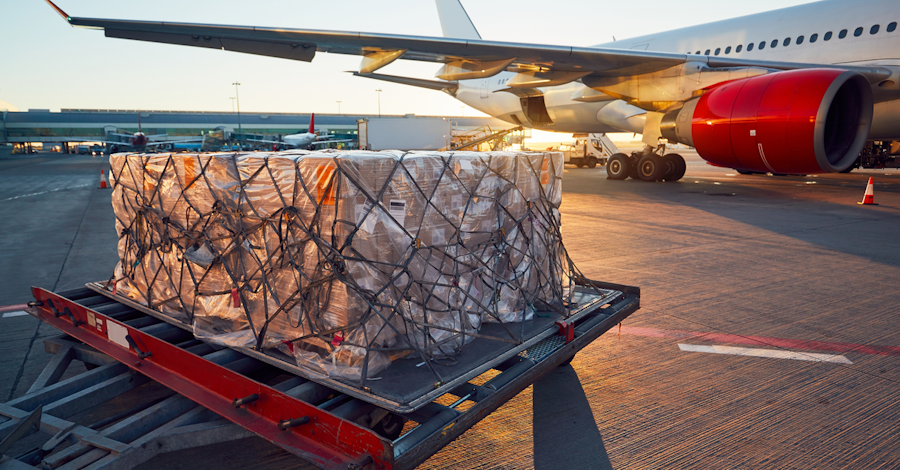News
Air Freight Safety

According to a study conducted by the National Aerospace Laboratory - Netherlands and the Civil Aviation Authority, there are 1.8 accidents per million tons of air freight transported every year. This might not seem like much, but when you consider that 25% of the UK's international goods are transported by air, accidents add up.
Air freight services enable businesses to stay competitive in a global market by providing products faster. For an island nation, such as the UK, air freight services will always be even more important to us than to some of our continental neighbours.There are many factors during the air cargo supply chain that can lead to accidents. These include, but are not limited to, the weather and environment, the vehicles being used, training and the loading of cargo.
Weather & Environment
Weather has a massive effect on air cargo logistics. While there is a great deal of study and research into weather patterns to optimise in-flight safety, ground crews are equally affected by adverse weather. It is therefore important to ensure that your material handling fleet of forklifts and tow tractors is sufficiently rugged to withstand wind, rain and snow.Forklifts with rugged, outdoor tyres and high ground clearance are well suited to all types of weather, making them ideal for airport fleets located in areas of changeable weather.Cargo facilities at airports are typically remote from the passenger facilities. Access to and from the aircraft are not generally as good for aircraft occupants and rest and refreshment facilities for them may not be as good as at a passenger terminal. This can have a negative impact on operator productivity and flight crew comfort.
Operating at Night
Many world-wide cargo operations are undertaken at night and there is no doubt that all ground and flight crew are, in general, less alert in the early hours than during day-light hours. Operating airport cargo machinery is difficult, but operating at night is even more hazardous.When moving heavy cargo, consider the routes between plane and other facilities and ensure that these routes are well lit. You should also assess these routes from a productivity perspective to ensure efficient movement of all machines.The forklifts and tow trucks should also be well equipped for night time use. Lights for darkness and fog lights for early morning mist are of particular importance to aircraft cargo handling for this reason.
Vehicles
A noticeable problem for these cargo operators is their use of older aircraft. When aircraft become freighters, some safety equipment may be removed.For example, on some old turboprop freighters, the autopilots may have been removed. Older aircraft are more likely to have exemptions from new, costly safety systems, such as Traffic Alert and Collision Avoidance Systems, high spec Flight Data Recorders and Cockpit Voice Recorders.Old aircraft can also mean poorer internal lighting, cabin heating and crew facilities as well as old safety equipment and poor evacuation facilities.The same can be said of material handling equipment that is used for moving materials at airports. Performing regular inspections and preventative maintenance on your fleet will help keep even legacy equipment up to spec.
Loading Planning
Hazards that are specific for cargo operations are when the centre of gravity (CG) is out of limits when shifting cargo. Accidents include situations where the CG was not within limits, or cargo is not properly restrained, which causes dangerous CG shifts during flight.Load planning is the detailed process of gathering data on items to be loaded on the aircraft and calculating the load plan based on the aircraft’s basic operating empty weight or dry operating weight, meaning without fuel. Included in the items to be loaded are the passengers, flight crews, and estimated cargo for a particular flight leg, resulting in an estimated "zero fuel weight". The centre of gravity must be within specified limits, so that the pilot can judge how it affects the scheduled flight.Once loaded, all cargo must be safely secured in a way that maintains the CG, while optimising the space within the hold. As mentioned, air freight is expensive, so maximising space is an essential cost efficiency equation.Adherence to proper load planning techniques and actual loading of the aircraft according to these plans reduces the chances of in-flight accidents and keeps fuel usage optimal.The entire sequence of cargo loading operations, from preparation of the pallets/containers through the information provided to flight crews, has a direct effect on safety.
Training
Cargo handler positions are typically entry-level positions characterised by relatively high rates of turnover. Because of a high turnover rate it can be difficult to control the quality of the cargo loading process. As it is critical to the safety of flight to ensure that cargo has been loaded according to plan and properly restrained, all individuals associated with the loading process must be provided with consistent and comprehensive training in aircraft loading.This includes training on forklifts and other material handling equipment. One of the risk factors in air freight safety is the other vehicles in the supply chain damaging the exterior of the plane. One shunt can compromise the integrity of the plane, resulting in serious accidents.
Subscribe
Keep up to date with PHL and all things forklift machinery.